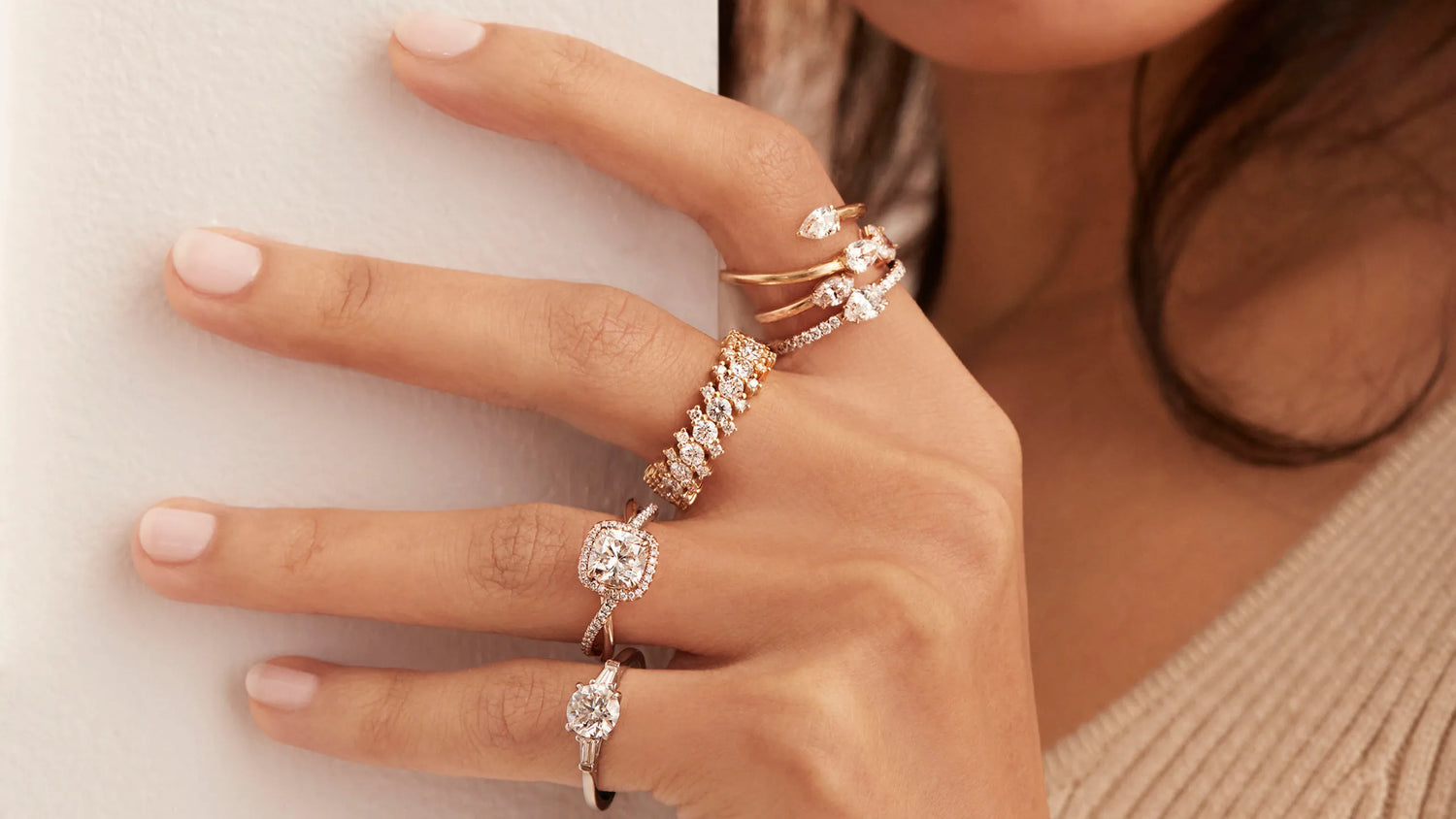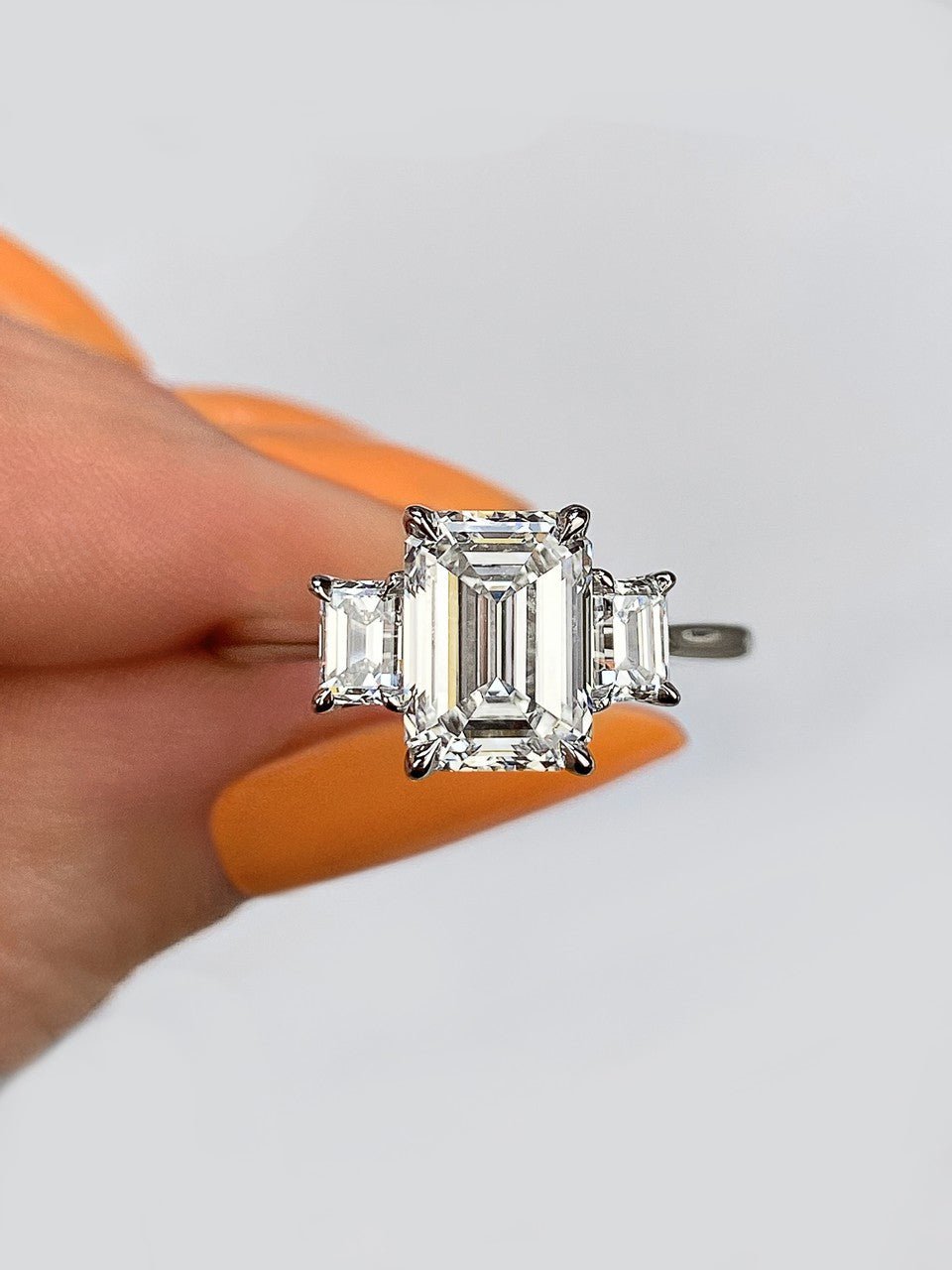THE 4Cs OF A DIAMOND
Every diamond is a wonder of nature, unique and a miracle of time and chance. Like fingerprints, no two diamonds are exactly the same.
With the growth in popularity in diamonds in the early 1950’s, the Gemological Institute of America (GIA) saw a need to standardize the quality of diamonds. By creating the 4C’s, color, clarity, cut and carat, buyers and sellers can now communicate with each other in a universal language regarding the quality of diamonds.
The GIA’s 4C’s is now accepted worldwide. In fact, the four C’s of diamond quality is the universal means of measuring the quality of any diamond, anywhere in the world. Most importantly with this unique, universal standardization, diamonds buyers are now able to know exactly the value of their purchase.
THE CUT OF A DIAMOND
Of all the four C’s: carat, clarity, cut and color, it is the cut alone which best determines the beauty or sparkle of a diamond.
A diamond’s cut doesn’t so much refer to whether it is oval, round, pear or emerald shaped, but rather its symmetry, polish and, most importantly, its proportions. In fact, the loveliness of a diamond depends more on its cut than any other factor.
Difficult and challenging to quantify, a diamond’s cut alone has three key effects when it comes to appearance:
-
The fire or dispersion of light into the various colors of the spectrum which are perceived by the naked eye as flares of color
- Brilliance or the brightness of a diamond is established by the combination of all the white light reflecting from the surface, as well as the interior of a fully polished diamond.
- Finally, Scintillation or the flashes of dark and light, also referred to as sparkle, occurs when the diamond or its source of light is shifted.
6C. Dunkles Bock
Overall Impression: A dark, strong, malty German lager beer that emphasizes the malty-rich and somewhat toasty qualities of continental malts without being sweet in the finish.
History: Originated in the Northern German city of Einbeck, which was a brewing center and popular exporter in the days of the Hanseatic League (14th to 17th century). Recreated in Munich starting in the 17th century. The name “bock” is based on a corruption of the name “Einbeck” in the Bavarian dialect, and was thus only used after the beer came to Munich. “Bock” also means “Ram” in German, and is often used in logos and advertisements.
6C. Dunkles Bock
Overall Impression: A dark, strong, malty German lager beer that emphasizes the malty-rich and somewhat toasty qualities of continental malts without being sweet in the finish.
History: Originated in the Northern German city of Einbeck, which was a brewing center and popular exporter in the days of the Hanseatic League (14th to 17th century). Recreated in Munich starting in the 17th century. The name “bock” is based on a corruption of the name “Einbeck” in the Bavarian dialect, and was thus only used after the beer came to Munich. “Bock” also means “Ram” in German, and is often used in logos and advertisements.
6C. Dunkles Bock
Overall Impression: A dark, strong, malty German lager beer that emphasizes the malty-rich and somewhat toasty qualities of continental malts without being sweet in the finish.
History: Originated in the Northern German city of Einbeck, which was a brewing center and popular exporter in the days of the Hanseatic League (14th to 17th century). Recreated in Munich starting in the 17th century. The name “bock” is based on a corruption of the name “Einbeck” in the Bavarian dialect, and was thus only used after the beer came to Munich. “Bock” also means “Ram” in German, and is often used in logos and advertisements.





